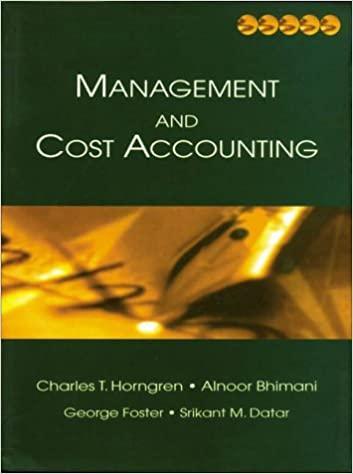Question
BACKGROUND: XYZ Company is considering an investment in a new inventory control system. The system will require a substantial up-front investment but is expected to
BACKGROUND:
XYZ Company is considering an investment in a new inventory control system. The system will require a substantial up-front investment but is expected to provide annual cash cost savings for the next 6 years. At the end of that year (year 6) the used system is likely to be outdated (but still functional) and will be sold for an estimated 10% of the original cost. (The equipment is sold at the end of year 6) The system falls under the 7 year IRS depreciation guidelines (assume straight-line depreciation full year every year). The system is expected to become operational at a cost of $2,800,000. Annual cash cost savings (primarily due to labor cost savings) are expected to average $600,000. XYZ is in the 30% combined federal and state tax bracket and uses a hurdle rate of 12% to evaluate capital projects.
QUESTIONS
1. Prepare an exhibit that displays the outcome of your capital budgeting models NPV related calculations. The exhibit should clearly show each event that has a cash flow impact and the project's Net Present Value.
2. Is the projects IRR more or less than the hurdle rate of 12%? How do you know? Within a range of 1 percentage point (for example 6% - 7%) where does the IRR on this project fall?
3. Capital budgeting models (like all forecasts) are driven primarily by educated assumptions about outcomes. Which actual outcomes are most subject to deviation from expected outcomes? Why?
Step by Step Solution
There are 3 Steps involved in it
Step: 1

Get Instant Access to Expert-Tailored Solutions
See step-by-step solutions with expert insights and AI powered tools for academic success
Step: 2

Step: 3

Ace Your Homework with AI
Get the answers you need in no time with our AI-driven, step-by-step assistance
Get Started


